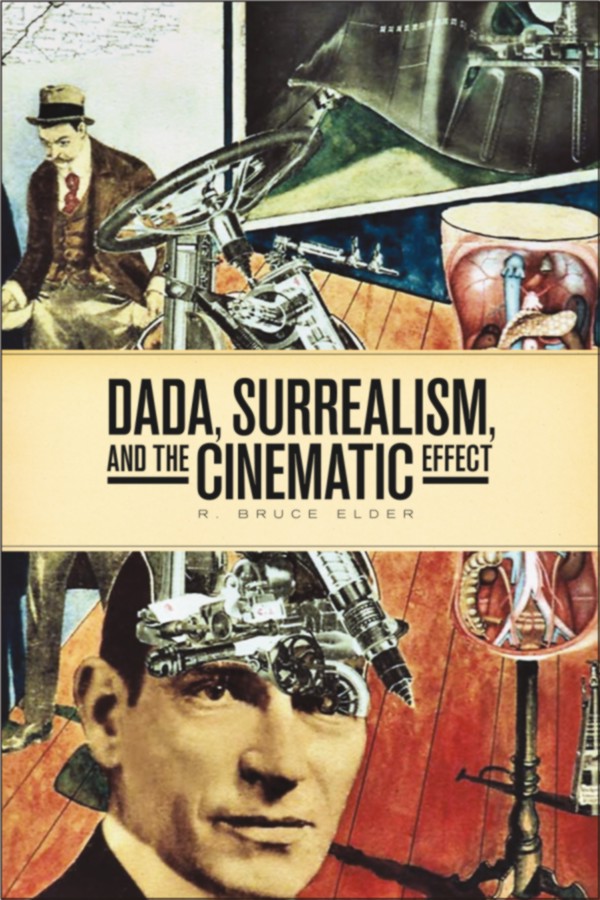Lotte H. Eisner: Fritz Lang (1976)
Filed under book | Tags: · biography, cinema, film, film criticism, film history

“Fritz Lang, almost alone among his fellow continental refugees, was able to make outstanding films in both his native Germany and his adopted Hollywood. The director of Metropolis and M and Dr. Mabuse came to America in 1934 and began a long and distinguished career that included such films as You Only Live Once, The Woman in the Window, Scarlet Street, Ministry of Fear, Rancho Notorious, and The Big Heat. He is a key figure in the history of film noir, bringing to the screen a fatalist’s vision of a menacing world of criminals, misfits, and helpless victims, and providing a distinctive visual look to every film he directed. This film-by-film study of Lang’s oeuvre by one of the great film historians combines personal insight—Eisner and Lang had a long standing friendship—with deep historical understanding of Lang’s roots in German culture and cinema. Both true modernists, Eisner and Lang are perfectly matched, as this book clearly demonstrates.” (back cover)
Publisher Secker and Warburg, London, 1976
Reprint, Da Capo Press, New York, 1986
ISBN 0306802716
416 pages
via dreyer
PDF (158 MB)
Comment (0)Radical Light: Alternative Film and Video in the San Francisco Bay Area, 1945-2000 (2010)
Filed under book, catalogue | Tags: · art history, california, experimental film, film, film history, san francisco, video, video art

“This kaleidoscopic collection of essays, interviews, photographs, and artist-designed pages chronicles the vibrant and influential history of experimental cinema in the San Francisco Bay Area. Encompassing historical, cultural, and aesthetic realms, Radical Light features critical analyses of films and videos, reminiscences from artists, and interviews with pioneering filmmakers, curators, and archivists. It explores artistic movements, film and video exhibition and distribution, artists’ groups, and Bay Area film schools. Special sections of ephemera—posters, correspondence, photographs, newsletters, program notes, and more—punctuate the pages of Radical Light, giving a first-hand visual sense of the period. This groundbreaking, hybrid assemblage reveals a complex picture of how and why the San Francisco Bay Region, a laboratory for artistic and technical innovation for more than half a century, has become a global center of vanguard film, video, and new media.
Among the contributors are Rebecca Solnit and Ernie Gehr on Bay Area cinema’s roots in the work of Eadweard Muybridge and others; Scott MacDonald on Art in Cinema; P. Adams Sitney on films by James Broughton and Sidney Peterson; Stan Brakhage, Bruce Conner, Lawrence Jordan, and Yvonne Rainer on the Bay Area film scene in the 1950s; J. Hobeman on films by Christopher Maclaine, Bruce Conner, and Robert Nelson; Craig Baldwin on found footage film; George Kuchar on student-produced melodramas; Michael Wallin on queer film in the 1970s; V. Vale on punk cinema; Dale Hoyt and Cecilia Dougherty on video in the 1980s and 1990s; and Maggie Morse on new media as sculpture.”
Edited by Steve Anker, Kathy Geritz and Steve Seid
Publisher University of California Press, and Berkeley Art Museum and Pacific Film Archive, Berkeley, 2010
ISBN 9780520249103, 0520249100
352 pages
Reviews: Molly H.Cox (Other Cinema, 2011), Lucy Raven (BOMB, 2011), Federico Windhausen (Moving Image, 2012), Mike Leggett (Leonardo, 2012).
Exhibition
Publisher (BAMPFA)
Publisher (UC Press)
WorldCat
multiple formats (on Internet Archive)
PDF (35 MB)
R. Bruce Elder: Dada, Surrealism, and the Cinematic Effect (2013)
Filed under book | Tags: · alchemy, art history, avant-garde, chance, cinema, collage, consciousness, dada, dreams, film, film history, language, mathematics, occultism, sexuality, spiritualism, surrealism, theory

“This book deals with the early intellectual reception of the cinema and the manner in which art theorists, philosophers, cultural theorists, and especially artists of the first decades of the twentieth century responded to its advent. While the idea persists that early writers on film were troubled by the cinema’s lowly form, this work proposes that there was another, largely unrecognized, strain in the reception of it. Far from anxious about film’s provenance in popular entertainment, some writers and artists proclaimed that the cinema was the most important art for the moderns, as it exemplified the vibrancy of contemporary life.
This view of the cinema was especially common among those whose commitments were to advanced artistic practices. Their notions about how to recast the art media (or the forms forged from those media’s materials) and the urgency of doing so formed the principal part of the conceptual core of the artistic programs advanced by the vanguard art movements of the first half of the twentieth century. This book, a companion to the author’s previous, Harmony & Dissent, examines the Dada and Surrealist movements as responses to the advent of the cinema.”
Publisher Wilfrid Laurier University Press, Waterloo, 2013
Film and Media Studies series
ISBN 9781554586257, 1554586259
x+765 pages
Reviews: John W. Locke (Canadian J of Film Studies 2014), Robin Walz (Canadian J of History 2014), Bart Testa (U Toronto Quarterly 2015).
PDF (8 MB, updated on 2019-12-14)
EPUB (added on 2019-12-14)

